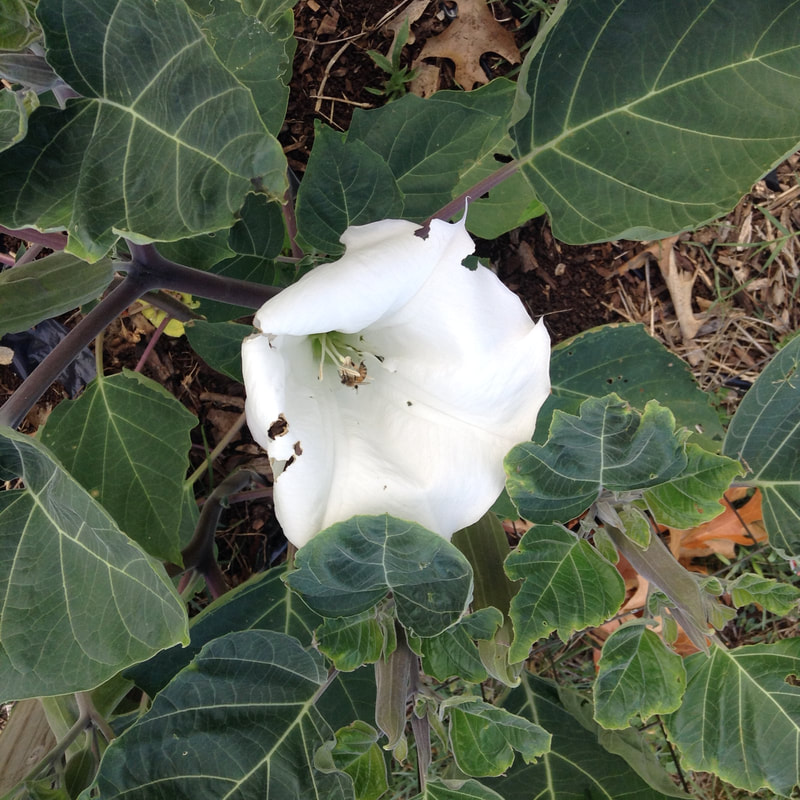|
Photo and article by Donna Iverson
There is one flowering plant in my community garden that continually draws my attention. It’s called Moonflower and sports spectacularly large white flowers that beg to be noticed. It most likely self-seeded itself inside the fence that surrounds the garden. Mysterious and romantic, Moonflower is native to North and South America. Often found along the roadside or in waste places, this heirloom is considered a weed by many. But not this gardener. Night flowering plants have always intrigued me, like evening primrose, night-blooming jasmine, nicotiana, and evening primrose. And like all night-blooming plants, it’s scent is intoxicating Plus I admire its ability to jump the fence and ingratiate itself alongside the cultivated flowers and vegetables. As its name implies, Moonflower is a nocturnal plant. If you are an early riser, you will see it’s giant white trumpet-like flowers open to the sky. As the sun rises, these otherworldly blooms slowly close and become large cone shaped buds. Symbolically, Moonflower is considered a sacred visionary plant that leads to creative insights emerging out of the darkness. A member of the bindweed family, it’s closest cousins are the morning glories. Not surprisingly, Moonflower is sometimes called a tropical white morning glory. It is drought tolerant, deer resistant, and low maintenance. It can be grown in a container on your patio or back deck. Place in full sun. The Moonflower attracts moths and bees, which pollinate the plant. A word of warning: Moonflower is toxic, all parts, flowers, leaves, stem and root. So if you have children or pets that like to nibble, best to avoid it. Come fall, the Moonflower will produce hundreds of seeds which look like small brown nuts. Collect these for spring plantings. If you don’t collect the seeds, Moonflower will self seed anyway in multiple locations. Moonflowers would work in an heirloom native garden, in a white garden, in a night garden and a xeriscape garden. Or perhaps you prefer it as an accent plant. Wherever it is placed, it will call attention to itself. August gardening tip: difficult to believe but it’s time to think about fall planting. Some seeds and seedlings that can be planted in mid to late August include: arugula, beets, kale, radishes and spinach.
1 Comment
Becky Beets
8/17/2020 01:55:48 pm
Years ago I found this beautiful plant in the greenhouse and bought it to see what it would do for me....I had seen the plant in full bloom at a home in Fremont, and loved it..I did have success with my plant, it was gorgeous, but since then I guess I don't go to the greenhouses in time and they are sold out. Hoping to do better next spring!
Reply
Your comment will be posted after it is approved.
Leave a Reply. |
Archives
April 2024
Categories |

 RSS Feed
RSS Feed